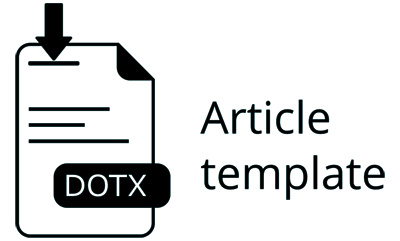ANALISA BIAYA PEMANFAATAN FLY ASH SEBAGAI MATERIAL DASAR BETON SELF COMPACTING GEOPOLYMER
Abstract
The vibratory compaction process to obtain high-quality concrete has difficulties when faced with complex structural models. In the last few decades, research and development of self-compacting concrete (SCC) has been carried out. The application of SCC in Indonesia is still limited because the manufacturing costs are quite high. The composition of cement in SCC is more than conventional concrete, which means it causes higher air pollution. The amount of cement production is directly proportional to the amount of CO2 released into the atmosphere, so the world cement industry makes a major contribution to global greenhouse gas emissions. Several studies have begun to innovate combining SCC and overall cement replacement technology with a pozzolanic material that has cement-like characteristics. One of the alternative materials to replace Portland cement is fly ash, which is a waste material from burning coal in the PLTU. For fly ash to bind like cement, an activator is needed. The mixture of fly ash and activator is known as geopolymer paste, so the combination of these two concrete technologies is called geopolymer self-compacting concrete with fly ash as a base material. In Indonesia, geopolymer self-compacting concrete is still limited in the mix design testing phase, so the authors are interested in knowing the economic review of this type of concrete, and intend to analyze the cost of production of this geopolymer self-compacting concrete using local materials, fly ash from PLTU II Amurang, North Sulawesi Province. The study began with an examination of local materials in North Sulawesi for a concrete mix design. Followed by conducting experimental testing to get the characteristics of fresh concrete and the compressive strength of the concrete. Furthermore, analysis of production costs based on mix-design for 1 m3 of concrete. The workability test of the fresh geopolymer self-compacting concrete with fly ash as a base material through the slump flow method, V-funnel test, and L-Box Shaped test shows that it qualifies the SCC requirements and also produces K-250 quality of concrete. Geopolymer concrete combined with SCC concrete, which has a relatively high cost, results in high production costs of Geopolymer Self Compacting Concrete.
References
Agustini, N. K. A., & Aryastana, P. (2017). Pengaruh Penambahan Abu Sekam dan Serbuk Kaca Terhadap Kuat Tekan dan Berat Jenis Beton. PADURAKSA, 6(2), 190–202.
Ahmed, M. F., Nuruddin, M. F., & Shafiq, N. (2011). Compressive Strength and Workability Characteristics of Low-Calcium Fly ash-based Self-Compacting Geopolymer Concrete. International Journal of Architectural, Civil and Construction Sciences, 5(2), 64–70. https://doi.org/doi.org/10.5281/zenodo.1330481
Alil, I. (2009). Sifat Mekanis Lightweight Self Compacting Concrete.
Anonim. (2002). ACI 232.2R-96 Use of Fly Ash in Concrete. Penssylvania: The America Concrete Institute.
Anonim. (2005). ASTM C618-05 Standard Speciï¬cation for Coal Fly Ash and Raw or Calcined Natural Pozzolan for Use in Concrete. Michigan: ASTM International.
Anonim. (2017). Spesifikasi khusus interim SKh-1.7.23.4: Beton Memadat Sendiri (Self Compacting Concrete). Jakarta: Kementerian Pekerjaan Umum dan Perumahan Rakyat.
Davidovits, J. (1991). Geopolymers. Journal of Thermal Analysis, 37(8), 1633–1656. https://doi.org/10.1007/BF01912193
Gumalang, S., Wallah, S. E., & Sumajouw, M. D. . (2016). Pengaruh Kadar Air dan Superplasticizer pada Kekuatan dan Kelecakan Beton Geopolimer Memadat Sendiri. Jurnal Ilmiah Media Engineering, 6(3), 574–582.
Hardjito, D. (2002). No Title. Retrieved from http://www.kompas.com/kompas-cetak/0210/21/iptek/beto45.htm
Herbudiman, B., & Siregar, S. E. (2013). Kajian Interval Rasio Air-Powder Beton Self Compacting Terkait Kinerja Kekuatan dan Flow. Konferensi Nasional Teknik Sipil 7 UNS, M1–M8.
Manuahe, R., Sumajouw, M. D. J., & Windah, R. S. (2014). Kuat tekan beton geopolimer berbahan dasar abu terbang (fly ash). Jurnal Sipil Statik, 2(6), 277–282.
Mariani, Sampebulu, V., & Ahmad, A. G. (2009). Pengaruh Penambahan Admixture terhadap Karakteristik Self Compacting Concrete (SCC). Jurnal SMARTek, 7(3), 176–183.
Muthoharoh, I., Agustin, R. S., & Sunarnasih, E. S. (2014). Self Healing Capability Beton dengan Fly Ash sebagai Pengganti Sebagian Semen ditinjau dari Workability, Kuat Tekan dan Permeabilitas. Thesis, Department of Engineering and Vocational Science, UNS.
Naik, T. R. (2005). Sustainability of Cement and Concrete Industries. In Achieving Sustainability in Construction (pp. 141–150). Thomas Telford Publishing. https://doi.org/10.1680/asic.34044.0017
Okamura, H., & Ouchi, M. (2003). Self-Compacting Concrete. Journal of Advanced Concrete Technology, 1(1), 5–15. https://doi.org/10.3151/jact.1.5
Panuntun, P. B. (2019). Self Compacting Concrete (SCC) sebagai Standar Beton Masa Depan. Bunga Rampai Knowledge Management Penerapan Teknologi Konstruksi. Jakarta: Kementerian Pekerjaan Umum dan Perumahan Rakyat, Dirjen Bina Konstruksi.
Sondakh, C., & Gumalang, S. (2020). The processing, properties and optimum mix of fly ash based - self compacting geopolymer concrete. IOP Conference Series: Earth and Environmental Science, 419, 012067. https://doi.org/10.1088/1755-1315/419/1/012067
Suprapto, H., & Mardiono. (2010). Pengaruh Pemanfaatan Abu Terbang (Fly Ash) dalam Beton Mutu Tinggi. Jurnal Ilmiah Desain & Konstruksi, 9(1).
Thomas, M. (2007). Optimalizing the Use of Fly Ash in Concrete. Washington DC: Portland Cement Association.
UNEP. (2017). The Emissions Gap Report 2017. Nairobi: United Nations Environment Programme.
Authors who publish with this journal agree to the following terms:
- Authors retain copyright and grant the journal right of first publication with the work simultaneously licensed under a Creative Commons Attribution License that allows others to share the work with an acknowledgement of the work's authorship and initial publication in this journal.
- Authors are able to enter into separate, additional contractual arrangements for the non-exclusive distribution of the journal's published version of the work (e.g., post it to an institutional repository or publish it in a book), with an acknowledgement of its initial publication in this journal.
- Authors are permitted and encouraged to post their work online (e.g., in institutional repositories or on their website) prior to and during the submission process, as it can lead to productive exchanges, as well as earlier and greater citation of published work (See The Effect of Open Access).
 Abstract viewed = 404 times
Abstract viewed = 404 times
 PDF downloaded = 837 times
PDF downloaded = 837 times










